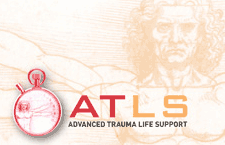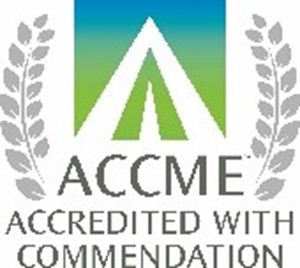Advanced Trauma Life Support
 Upcoming 11th Edition ATLS Courses
Upcoming 11th Edition ATLS Courses
ATLS Full Course (2-day)
- Jan. 15-16, 2026
- July 23-24, 2026
- Oct. 22-23, 2026
Student Refresher Course
- April 24, 2026
- May 15, 2026
- Aug. 20, 2026
History
The delivery of trauma care in the United States before 1980 was at best inconsistent. A tragedy occurred in February 1976 that changed trauma care in the "first hour" for injured patients in the United States and much of the rest of the world. Dr. Jim Styner, an orthopaedic surgeon was piloting his plane and crashed in a rural Nebraska cornfield. He sustained serous injuries, three of his children sustained critical injuries, and one child sustained minor injuries. His wife was killed instantly. The care that he and his family subsequently received was inadequate by the day’s standards. The surgeon, recognizing how inadequate their treatment was, stated, "When I can provide better care in the field with limited resources than what my children and I received at the primary care facility, there is something wrong with the system, and the system has to be changed."
A group of private-practice surgeons and doctors in Nebraska, the Lincoln Medical Education Foundation , and the Lincoln-area Mobile Heart Team Nurses, with the help of the University of Nebraska Medical Center, the Nebraska State Committee on Trauma (COT) of the American College of Surgeons (ACS), and the Southeast Nebraska Emergency Medical Services identified the need for training in advanced trauma life support. A combined education format of lectures, lifesaving skill demonstrations, and practical laboratory experiences formed the first prototype ATLS course
A new approach to the provision of care for individuals suffering major, life-threatening injury premiered in 1978, the year of the first ATLS course. This prototype ATLS course was filed-tested in conjunction with the Southeast Nebraska Emergency Medical Services. One year later, the ACS COT, recognizing trauma as a surgical disease, enthusiastically adopted the course under the imprimatur of the College and incorporated it as an educational program.
This course was based on the assumption that appropriate and timely care could significantly improve the outcome of injured patients. The original intent of the ATLS Program was to train doctors who do not manage major trauma on a daily basis, and the primary audience for the course has not changed. However, today the ATLS method is accepted as a standard for the "first hour" of trauma care by many who provide care for the injured, whether the patient is treated in an isolated rural area or a state-of-the-art trauma center.
The program has grown each year in the number of both courses and participants. To date, the course had trained more than 1.5 million participants in more than 75,000 courses around the world. Currently, an average of 50,000 clinicians are trained each year in over 3,000 courses. The greatest growth in recent years has been in the international community, and this group currently represents approximately more than half of all ATLS activity.
The text for this course is revised approximately every 4 years and incorporates new methods of evaluation and treatment that have been accepted parts of the armament of providers who treat trauma patients. Changes that are made to the program reflect accepted, verified practice patterns, not "cutting edge" technology or experimental methods.
Objectives
Upon successful completion of the course the student will be able to:
- Demonstrate the skills necessary to assess and manage the patients with multiple injuries in the early hours of care
- Establish management priorities for the multiply injured patient
- Demonstrate concepts and principles of primary and secondary surveys
Student Refresher Course
- 1/2 day course format
- Provides core content overview, written and practical testing
- Successful completion status valid for 4 years from course date.
2-Day Provider Course
- 2 day course format
- Provides core content overview, written and practical testing
- Successful completion status valid for 4 years from course date.
Instructor Course
- 1.5 day course ONLY available to physicians who were identified as having "Instructor potential" in a previous Student Course
Location
The course will take place at USA Health University Hospital located at 2451 University Hospital Drive, Mobile, Alabama 36617. Driving and parking instruction will be mailed with the registration acknowledge.
Continuing Medical Education Credit Information
Accreditation
The American College of Surgeons is accredited by the Accreditation Council for Continuing
Medical Education (ACCME) to provide continuing medical education for physicians.
AMA PRA Category 1 CreditsTM
The American College of Surgeons designates this live activity for a maximum of 16 AMA PRA Category 1 CreditsTM. Physicians should claim only the credit commensurate with the extent of their participation
in the activity.
Of the AMA PRA Category 1 CreditsTM listed above, a maximum of 16 credits meet the requirements for Self-Assessment.
Of the AMA PRA Category 1 CreditsTM listed above, a maximum of 16 credits meet the requirements for Trauma.*
The content of this activity may meet certain mandates of regulatory bodies. Please
note that ACS has not and does not verify the content for such mandates with any regulatory
body. Individual physicians are responsible for verifying the content satisfies such
requirements.


Fee
2-Day Provider Course: $995
1-Day Refresher Course: $695
Cancellation Policies
We reserve the right to cancel the class 2 weeks before scheduled date, if no more than 8 people sign up for the class. If student cancels within 10 days of meeting, there will be a cancellation fee. This fee will be determined at the time of cancellation.
Contact Information
For more information, please contact Rebecca Scarbrough at rscarbrough@health.southalabama.edu or (251) 471-7971.


